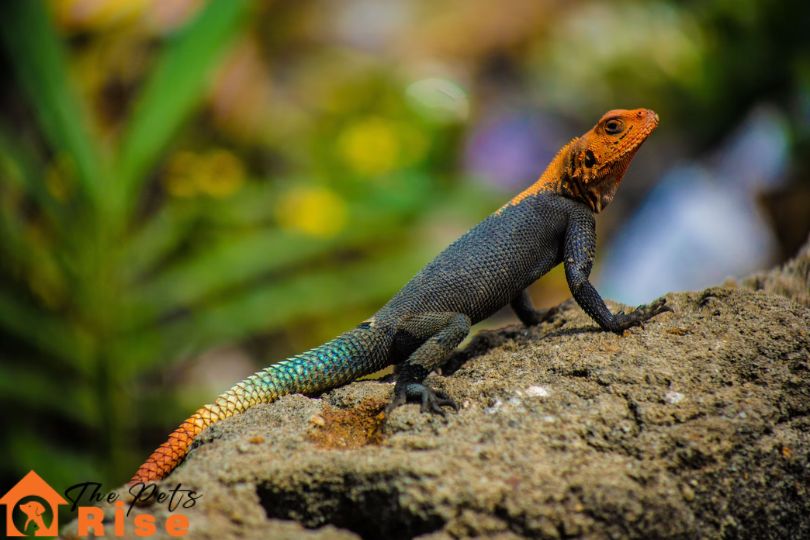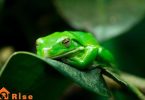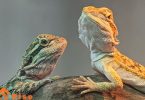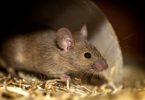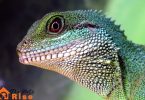lizard as pet is one of the most unique choices of keeping a pet but this idea is gaining popularity around America these days. However, you cannot just get any lizard as pet and expect them to grow better and think that you can take care of it easily. Not every large or small lizards are good candidate as pet before you choose to keep lizard pets, you will need to make sure that you have chosen the right type of lizard and you know how to take care of them accordingly. Continue reading to find out everything regarding lizard as pet.
Finding The Best Pet Lizards
Before making a decision about opting for a lizard as pet you should research yourself first. Take the time to gather information about the specific species of lizard you are interested in, and carefully consider whether you can provide the necessary care throughout its entire lifespan. Here are some key factors to bear in mind:
– Long-Term Commitment: Owning a lizard pet generally entails a long-term commitment. It is essential to understand that lizards can live for many years, so be prepared to provide care and attention for an extended period.
– Cost Considerations: When you are estimating about petting lizard then you will be surprised that the overall cost will be relatively low. However, it is important to note that the equipment required to properly care for a lizard can be considerably more expensive than the lizard itself. Take into account the costs associated with acquiring an appropriate enclosure, heating and lighting equipment, food, and veterinary care. Also, the reptile diet can be a little hard to understand for newcomers.
– Adult Size: It is crucial to determine the eventual size of your pet lizards species that it will reach as an adult. Some lizards may appear small and adorable when young, but they can grow into large reptiles that require substantial space and specific care. Ensure you can accommodate their size requirements before making a decision.
– Health and Safety: It is important to be aware that all reptiles, including lizards, can carry salmonella bacteria. Educate yourself about the potential risks and take necessary precautions to minimize them. Maintaining proper hygiene, such as regular handwashing and proper handling techniques, can help mitigate the risk of transmission.
By considering these factors and conducting comprehensive research, you will be better equipped to make an informed decision about lizard as pet and provide the appropriate care for your potential pet.
The Type of Lizard Should You Get?
When considering lizard as pet, it is advisable for beginners to opt for species that are easier to care for and handle. Following are the best lizards for beginners, provided you are willing to invest in the appropriate equipment:
Leopard Geckos:
These small lizards are highly recommended for beginners, as they are small in size, easy to handle, and do not require a large tank or specialized UVB lighting. Additionally, leopard geckos come in a variety of colors, adding to their appeal. Crested geckos and fat-tailed geckos share similar care requirements and can be considered as well.
Frill-Necked Lizards and Bearded Dragons:
These lizards possess a friendly nature, making them easy-to-handle pet lizards. However, you will need to have a comparatively large tank and full spectrum UV lighting to thrive.
Blue-Tongued Skinks:
Generally, this lizard as pet are well-behaved and suitable for beginners. Blue-tongued skinks are a great choice for every new reptile pet owner. They do, however, necessitate a large tank and full exposure to UV lighting for their well-being.
Green Anoles:
Anoles are small lizards readily available in the pet trade. While they do not require a large tank, they do need full-spectrum UV lighting. It’s worth noting that they may not be as easily handled as other beginner-friendly lizards.
By selecting one of these lizard species and ensuring you have the appropriate equipment, you can embark on your journey as a pet lizard owner with greater confidence.
For Expert Reptile Enthusiasts
For seasoned reptile enthusiasts, there are certain lizard as pet that present a greater level of a challenge due to specific care requirements, handling considerations, or the space needed to accommodate them. If you have experience in lizard ownership and are up for a more demanding endeavor, the following species are worth considering:
Day Geckos:
This vibrant lizard pet requires meticulous attention to its habitat, including proper temperature, humidity, and access to live food sources.
Uromastyx:
Known for their unique appearance, Uromastyx lizards necessitate specialized heat and lighting setups, as well as a diet consisting primarily of vegetation.
Tokay Geckos:
This lizard is a pet renowned for its striking appearance and vocal nature. Tokay Geckos require specific conditions in terms of humidity, temperature, and habitat complexity.
Iguanas:
Due to their size, iguanas require ample space, a regulated environment, and a varied diet of greens, fruits, and occasional insects.
Chameleons:
These fascinating pet lizards necessitate meticulous attention to their environment, including humidity, temperature, and foliage, as well as a diet rich in live insects.
Chinese Water Dragons:
These semi-aquatic lizards require spacious enclosures with both land and water areas, precise humidity control, and a diet comprising insects, greens, and occasionally small vertebrates.
Long-Tailed Lizards:
Although relatively small lizards with long-tail, they have specific temperature and habitat requirements, including a warm basking spot and access to live insects for sustenance.
Tegus:
These large and intelligent lizard pets require spacious enclosures, a diverse diet including both animal and plant matter, and ample opportunities for physical and mental stimulation.
Black-Throated Monitors:
Requiring a sizable enclosure, specialized heating, and a varied diet of insects, small vertebrates, and occasional fruits, Black-Throated Monitors are suited for experienced keepers.
It is worth noting that there are numerous other species of pet lizards available, but it is crucial to conduct thorough research before acquiring any particular species. Ensure that you possess the necessary knowledge and resources to provide optimal care for the specific needs of your chosen lizard species.
Taking Care Of Lizard As Pet
After choosing and acquiring a lizard as a pet, the next step is to prepare the enclosure properly. Consider lighting, habitat setup, heat regulation, humidity control, nutrition, and lizard behavior.
-
Heat and lighting
Heat and lighting play pivotal roles in maintaining the well-being of your small lizards. As cold-blooded creatures, lizards rely on heat, invisible UV rays, and the day/night cycle to function optimally. Ensure a temperature gradient within the enclosure for the lizard to regulate its body temperature as needed..
-
Common health issue
Ensuring an appropriate diet and proper lighting conditions prevent metabolic bone disease, a common health issue in captive reptiles. Addressing the lizard’s diet is crucial to safeguard its health, as it helps prevent vitamin A deficiency.
-
Shedding Issue
Regular shedding is a natural process for reptiles, but difficulties in shedding indicate potential environmental issues that require adjustment. Monitoring and controlling humidity levels is vital for pet lizards, which often experience shedding problems. To ensure precise readings, you can use a hygrometer to accurately measure humidity levels and calibrate them properly.
-
Housing consideration
It is not advisable to house different lizard species together, even if their care requirements appear similar. Each species should have its own separate terrarium to prevent stress, aggression, and potential health risks.
-
Insect consumption
Insect consumption is common among lizards. Raising crickets or mealworms at home can be a convenient and cost-effective solution. This can reduce trips to the pet store for feeder insects. Make sure you know the basics of the reptile diet for convenient feeding.
-
Select a healthy lizard
You should diligently set up the enclosure to meet your lizard’s specific needs. You can confidently choose a healthy lizard from a reputable source. This ensures you have the necessary equipment to provide a nurturing and fulfilling life. Consider these crucial factors and comprehensive care needs to establish a suitable environment. Your pet lizard will thrive and enjoy a high quality of life under your dedicated guardianship.
Conclusion
Just like a regular pet, lizard as a pet is also more of a responsibility. They are unique and their living and dietary requirements are different and a bit complicated, especially for the newcomers. This is why you will need to do a little research and learn about petting lizards and reptile behavior. You can make sure that you know what you are looking for. You can also contact vets who specialize in reptile pets. In this way, you can make sure that you will have a great experience of keeping a lizard as pet. Follow our blog for more pet care tips.

